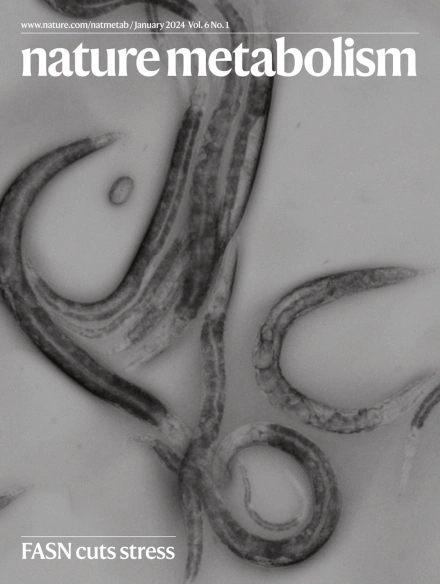Neuronal CCL2 responds to hyperglycaemia and contributes to anxiety disorders in the context of diabetes
IF 20.8
1区 医学
Q1 ENDOCRINOLOGY & METABOLISM
引用次数: 0
Abstract
Anxiety disorders are frequently observed in patients with diabetes and can be associated with several diabetes-related factors. Here we determine that hyperglycaemia is a major cause for the development of anxiety disorders through a C–C motif chemokine ligand 2 (CCL2)-dependent mechanism. By adopting complementary strategies, we demonstrate that neuron-specific (not peripheral) CCL2 mediates anxiety-like behaviours in streptozotocin-induced diabetic mice. Mechanistically, high glucose levels induce Tonicity-responsive enhancer-binding protein (TonEBP)-dependent CCL2 expression in neurons, leading to microglial activation in a paracrine manner. Similar phenotypes are also observed in high-fat diet-induced diabetic mice, independent of insulin signalling. Furthermore, we reveal that neuronal CCL2 in the medial prefrontal cortex and ventral hippocampus synergistically induces anxiety-like behaviours, indicating brain region-specific effects on diabetic mice. Finally, we confirm that the neuronal TonEBP–CCL2 axis and inflammatory pathways are both upregulated in patients with diabetes. Conclusively, neuronal CCL2 is specifically increased by hyperglycaemia and contributes to anxiety disorders, providing additional insights into the link between diabetes and mental health disorders. The authors provide insights into the role of neuronal CCL2 expression, which is triggered with hyperglycaemia and modulates anxiety disorders under conditions of diabetes.


神经元CCL2对高血糖有反应,并有助于糖尿病患者的焦虑障碍
焦虑障碍在糖尿病患者中经常观察到,并且可能与几种糖尿病相关因素有关。在这里,我们通过C-C基序趋化因子配体2 (CCL2)依赖机制确定高血糖是焦虑症发展的主要原因。通过采用互补策略,我们证明了神经元特异性(非外周)CCL2介导链脲佐菌素诱导的糖尿病小鼠的焦虑样行为。从机制上讲,高葡萄糖水平诱导神经元中TonEBP依赖性CCL2表达,导致小胶质细胞以旁分泌方式激活。在高脂肪饮食诱导的糖尿病小鼠中也观察到类似的表型,独立于胰岛素信号。此外,我们发现内侧前额叶皮层和腹侧海马体中的神经元CCL2协同诱导焦虑样行为,表明糖尿病小鼠的大脑区域特异性作用。最后,我们证实神经元TonEBP-CCL2轴和炎症通路在糖尿病患者中均上调。总之,神经元CCL2在高血糖时特异性增加,并与焦虑症有关,这为糖尿病和精神健康障碍之间的联系提供了更多的见解。
本文章由计算机程序翻译,如有差异,请以英文原文为准。
求助全文
约1分钟内获得全文
求助全文
来源期刊

Nature metabolism
ENDOCRINOLOGY & METABOLISM-
CiteScore
27.50
自引率
2.40%
发文量
170
期刊介绍:
Nature Metabolism is a peer-reviewed scientific journal that covers a broad range of topics in metabolism research. It aims to advance the understanding of metabolic and homeostatic processes at a cellular and physiological level. The journal publishes research from various fields, including fundamental cell biology, basic biomedical and translational research, and integrative physiology. It focuses on how cellular metabolism affects cellular function, the physiology and homeostasis of organs and tissues, and the regulation of organismal energy homeostasis. It also investigates the molecular pathophysiology of metabolic diseases such as diabetes and obesity, as well as their treatment. Nature Metabolism follows the standards of other Nature-branded journals, with a dedicated team of professional editors, rigorous peer-review process, high standards of copy-editing and production, swift publication, and editorial independence. The journal has a high impact factor, has a certain influence in the international area, and is deeply concerned and cited by the majority of scholars.
 求助内容:
求助内容: 应助结果提醒方式:
应助结果提醒方式:


